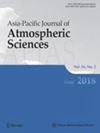Atmospheric rivers (ARs) are closely associated with extreme precipitation and hydrological events in East Asia. Predicting the impacts of climate change on ARs is crucial for preventing the damage caused by extreme precipitation and ensuring the effective operation of water management facilities. We aimed to conduct future projections (2080–2099) of annual and seasonal changes based on the assessment of East Asian AR and AR-related precipitation, using the Coupled Model Intercomparison Project Phase 6 (CMIP6) Multi-model ensemble (MME). The annual average integrated vapor transport (IVT) in East Asia in 2080–2099 will increase by approximately 32.5% compared to 1995–2014. Meanwhile, the annual average AR frequency (FAR) will increase by approximately 111%. Examination of the water vapor and moist wind components of the IVT revealed that the future increase in the IVT was primarily from increases in water vapor. The increase in IVT is largely responsible for the increase in AR frequency. Changes in AR following global warming have also affected precipitation, increasing the total precipitation for East Asia. An examination of the changes in AR characteristics shows that the frequency of intense AR events will also increase owing to global warming. Increases in the frequency of strong AR events during the East Asian summer monsoon season are projected to occur. Projections regarding the frequency and intensity of AR events vary substantially by region, such as Korean Peninsula, Southern China and Western Japan.



